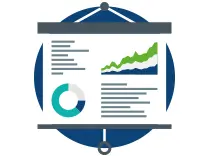
Choosing the right technology investment for your business can be difficult. Many factors need to be considered, the most important being costs and return on investment.
In an ideal world, where money wasn’t an issue, you would do whatever it takes to give every customer the perfect experience every time they contacted your company.
That could mean hugely overstaffing the contact centre so that nobody had to wait, or buying your perfect no-compromise IT solution.
Unfortunately, in the real world, there are competing demands for investment capital and cash and only a finite amount of each.
If your company’s goal is to be a CX leader in your sector, then you will be making technology investments sooner or later. Once you have decided what you need, the question is: how do we pay for it?
To buy or not to buy
Pricing models for IT investments have generally been Capex (capital expenditure) or Opex (operational expenditure) based.
Capital expenditure is an up-front investment where you buy your new system or software outright. It depreciates over time like any other business investment.
A company that purchases on a Capex model is taking on all the risk that the technology does what it was bought to do, doesn’t go out of date too quickly, and has the expected business benefit.
Operational expenditure usually involves a monthly or quarterly lease of equipment or software, perhaps on a per-seat basis. Costs immediately impact the bottom line but are tax deductible in the year they occur.
In an Opex model the risk is more shared out. The vendor gets paid by use so it’s in their self-interest to keep the technology up-to-date and continue to add features to retain users.
As a purchaser you always have a way out of the relationship if it isn’t working out. While you would expect prices to be higher over a comparable lifetime than with Capex, you would also expect prices to reduce the longer you commit as that means you’re taking on more of the risk.
A third option is called Pay-as-you-go and it overcomes many of the limitations even of the Opex pricing model.
With the Pay-as-you-go model, the supplier is taking almost all the risk as the user has ultimate flexibility to switch to a competing solution at any time. While you would expect to pay a premium for that flexibility – which includes the ability to scale as well as switch – economies are made because you only pay for what you use.
How to calculate ROI – Capex
As the purchase value is depreciated over several years, the return on investment must be calculated over the same period. The things that need to be considered include:
Return on Investment (ROI): Revenue earned from an investment compared to the amount invested, expressed as a percentage. This can be calculated annually and over the whole lifetime of the investment.
Break Even Period: An estimate of the amount of time it will take for the revenue earned to equal the amount invested and so break even.
Useful Life: Most IT systems will be obsolete within 5 to 10 years or sooner. You need to ensure your Pay Back Period is within this timescale.
Residual Value: This is an estimate of how much you could sell the equipment for at the end of its useful life.
How to calculate ROI – Opex
With Opex, the costs are recorded every month in the company’s profit and loss statements. ROI can therefore be calculated and monitored on an ongoing basis.
Complexity can enter the picture when it comes to allocating those costs between multiple departments, business units, product units and other teams that use the service being purchased. Many service providers now allow more fine-grained tracking of actual usage to allow this.
How to calculate ROI – PAYG
Costs are broken down by the service provider in greater detail. This means that costs can be allocated down to the last penny, which is great for smaller businesses which need to make resourcing decisions on the fly to maintain profitability.
Costs can also be allocated on a micro-scale and allocated to individual projects and even teams within projects. For managers who like to know the ROI of each unit of a project, this level of fine-grained billing detail is a great benefit.
As more businesses in global, fast-moving and low-margin markets need to adopt just-in-time and on-demand acquisition policies these days, we recommend the Pay-as-you-go model more and more to our users.











